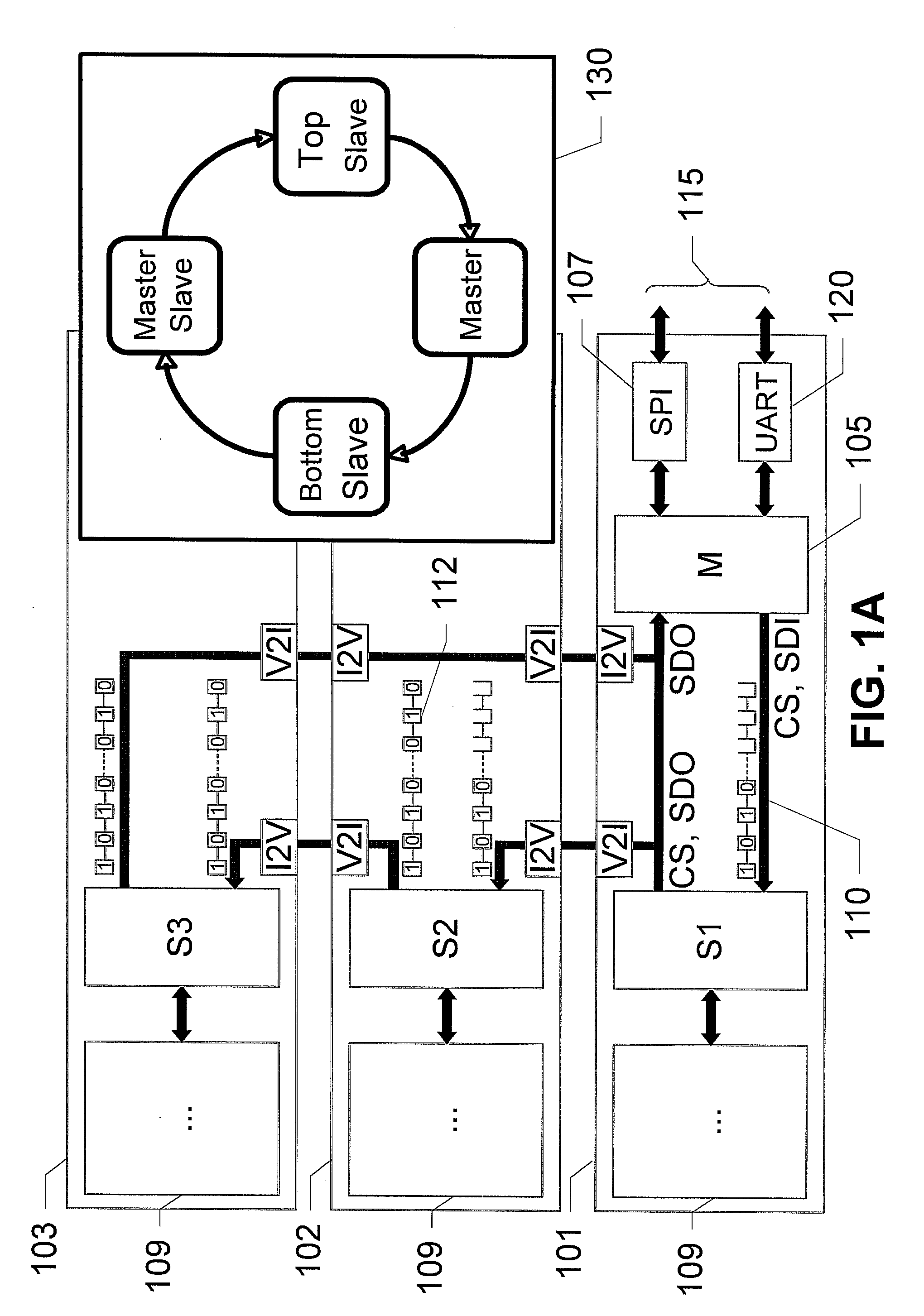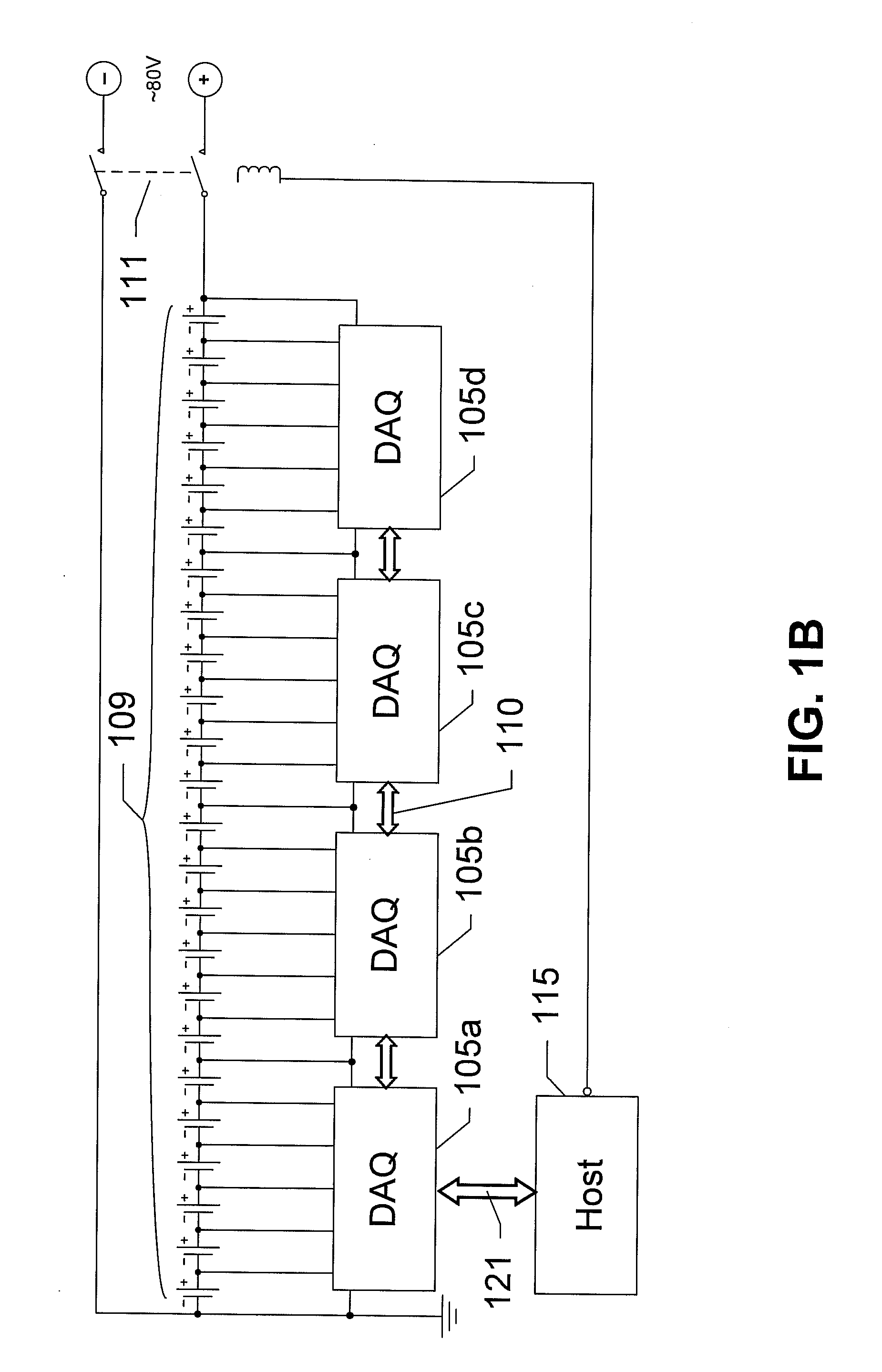Serial communications protocols
a communication protocol and serial communication technology, applied in the field of serial communication protocols, can solve problems such as sampling errors, data errors may occur, data errors are caused, etc., and achieve the effect of identical operation and performan
- Summary
- Abstract
- Description
- Claims
- Application Information
AI Technical Summary
Benefits of technology
Problems solved by technology
Method used
Image
Examples
Embodiment Construction
[0035]The present invention presents a novel technique for improving serial communications between devices. A plurality of devices is connected in a ring network. One device is defined as a master device and the remaining devices are defined as slave devices. The master device communicates with any slave in the ring using a continuous bi-frequency encoded bit stream. Serial data transmitted by the master device travels around the ring to each slave and then returns to the master. The start of each bit is signaled by the master inverting the state of the line connected to the first slave in the ring. The master can signal a ‘1’ bit by inverting the line a second time midway through a predefined bit-time. Otherwise, the bit is interpreted as a ‘0’. When data is being transmitted from the master to one or more slaves, each slave receives the data and sends it to the next slave in the ring unaltered. When the master wishes to receive data back from a slave, the master transmits placehol...
PUM
 Login to View More
Login to View More Abstract
Description
Claims
Application Information
 Login to View More
Login to View More - R&D
- Intellectual Property
- Life Sciences
- Materials
- Tech Scout
- Unparalleled Data Quality
- Higher Quality Content
- 60% Fewer Hallucinations
Browse by: Latest US Patents, China's latest patents, Technical Efficacy Thesaurus, Application Domain, Technology Topic, Popular Technical Reports.
© 2025 PatSnap. All rights reserved.Legal|Privacy policy|Modern Slavery Act Transparency Statement|Sitemap|About US| Contact US: help@patsnap.com



